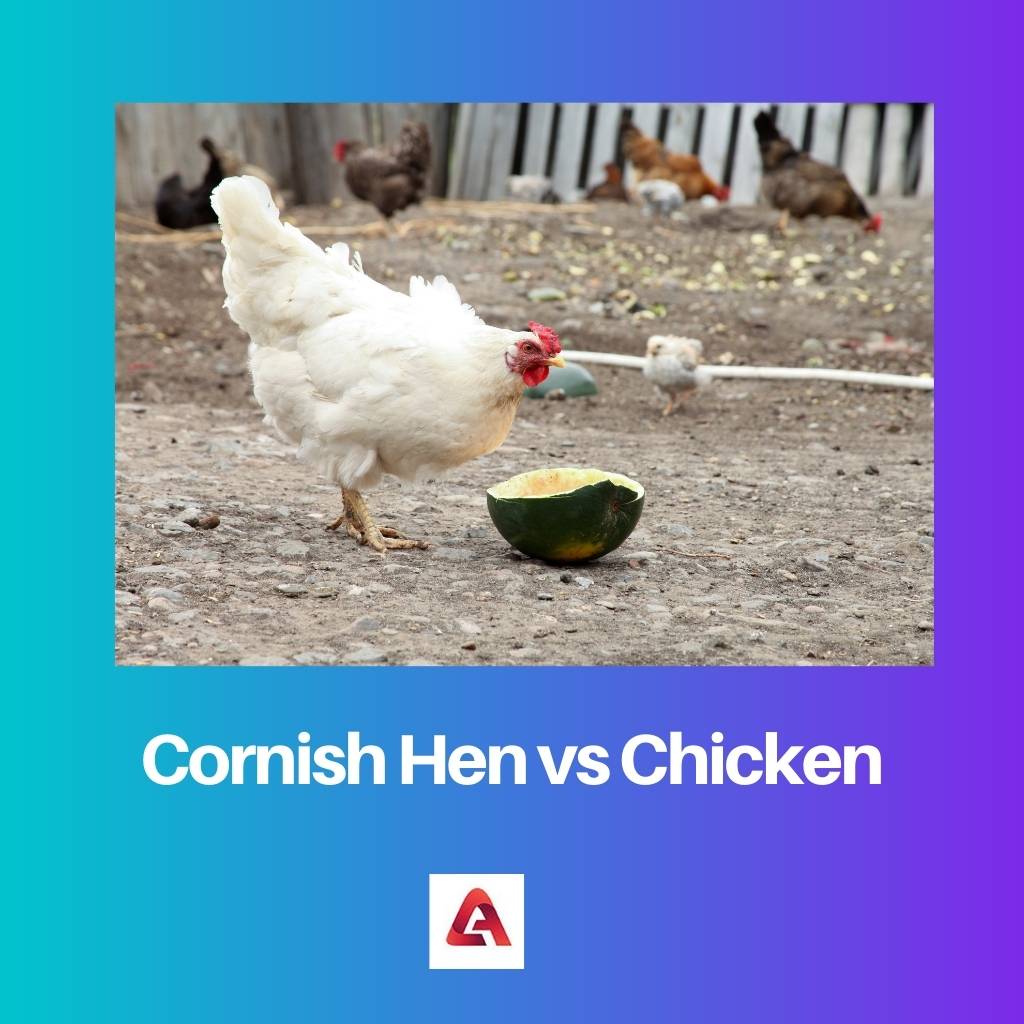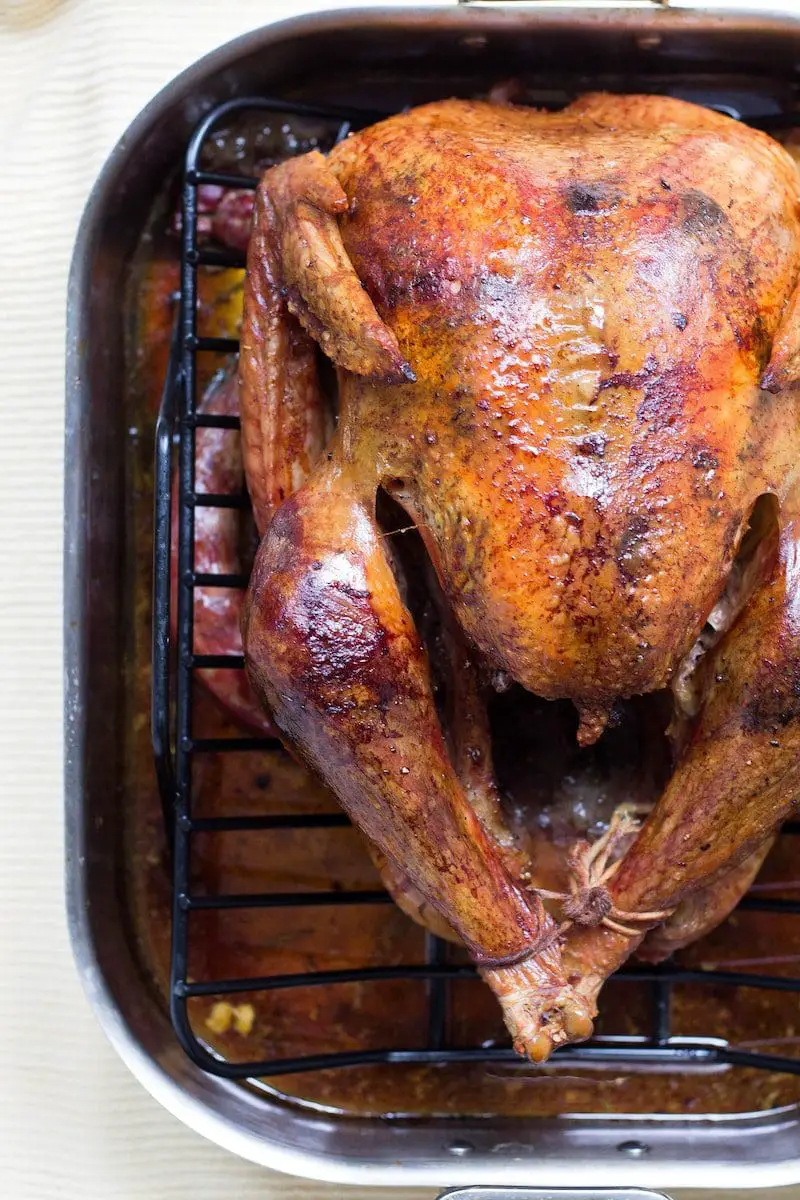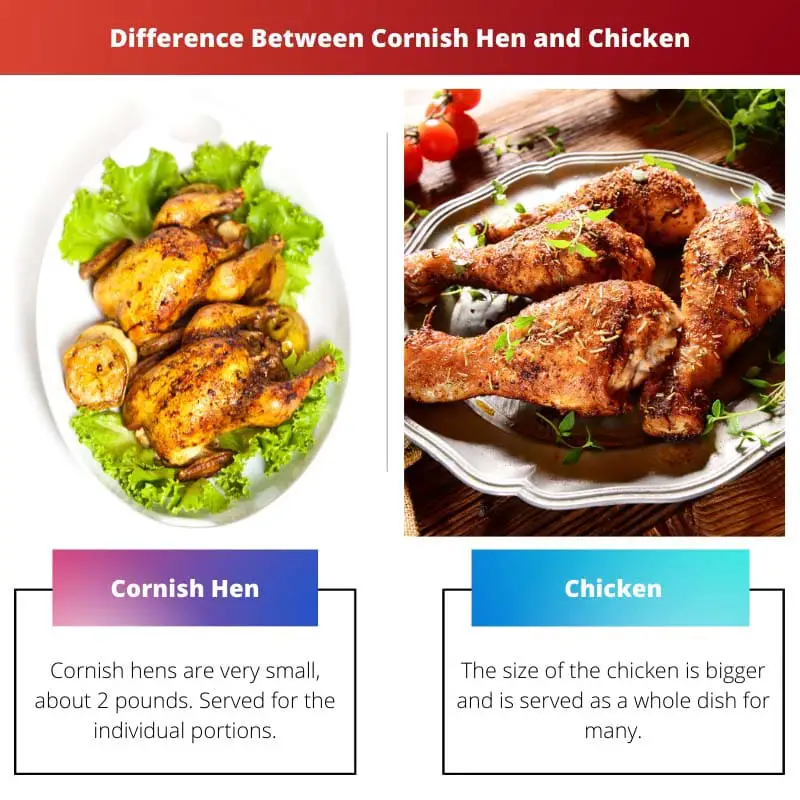When it is the hour of designing the perfect dish on the plate, it has to be meat savoured with the best ingredients.
However, people around the world prefer the size and maturity of the chicken they are going to need, and this event gives a highlight of Cornish Hen and Chicken, which differs in their maturity and size, drawing a big line that half of the world knows only like chicken.
If they think of a Cornish hen, they are going to think about it as a miniature chicken or not. The difference makes the chicken stand on the ground.
Key Takeaways
- Cornish hens are a small breed of chicken, weighing between 1 and 2 pounds, and offer tender, delicate meat.
- Chickens are larger and have a wider variety of cuts and flavors, depending on the breed and age.
- Cornish hens are roasted whole and served individually, while chickens can be cooked in various ways and shared among multiple people.
Cornish Hen vs Chicken
The Cornish hen originated in the United Kingdom, and weighs 1-2 pounds, with a lifespan of 5-8 years, while the Chicken originated in Asia, which weighs 4-7 pounds, has a lifespan of 5-10 years. Cornish hen has a subtle taste compared to Chicken.

Cornish Hens are a type of chicken variety that is a crossbreed of both white breed and Cornish chickens, making it a little bit of both.
Feminine chickens are called “Hens,” and aren’t very skilled in producing eggs, and hence they are eaten for their meat.
It is smaller, and French people call it “Poussin” for its small weight, like 1.6 pounds.
Chicken, on the other hand, is termed more frequently, but the difference in the concept remains. Chicken weighs more along with its bigger size, which makes it meatier to some people.
The word chicken has a broader meaning and is called a rooster, which is equivalent to the human bird in the family.
Chicken does not reach maturity as faster as Cornish hens and is good at laying eggs.
Comparison Table
| Parameters of Comparison | Cornish Hen | Chicken |
|---|---|---|
| Size | Cornish hens are very small, about 2 pounds. Served for the individual portions. | The size of the chicken is bigger and is served as a whole dish for many. |
| Texture | The texture of cornish hens is more tender. | The texture of the chicken is less tender as they are cut at an older age. |
| Taste and Nutrition | Cornish hen is prepared in a strong flavor and contains less fat and calories. | Chicken is also prepared in a strong flavor, but less than cornish hends, and contains more fat and calories. |
| Cooking Process | Cooked as roasted or grilled. | Cooked as a roasted whole, stuffed, or cut up for fried. |
| Packaging | Packaged and sold in whole. | Packaged and sold in parts as per needs. |
What is Cornish Hen?
Cornish Hen is one of the varieties of poultry bred in Cornwall, England.
The size and shape of Cornish hens are different from other chickens, which affects their way of cooking, and they serve people differently compared to any meat dish.
Both male and female Cornish hens have short legs, which impact their size, and broad, muscular breasts, which impact the cooking and dish.
Compared to chickens, Cornish hens grow slowly, But they reach a mature size and cook faster than them.
They are known for their amazing tender taste and amazing meat qualities that make them very preferable among meat lovers. They are used extensively for breeding programs nowadays.
Cornish hens come across as a standard meat-type chicken that is packaged in small sizes and serves an individual portion when eaten.
It is said that the Cornish hen has higher nurturing skills than any other poultry and will incubate its chicks.
But their features aren’t that denser and are tight, which makes them less capable of nursery her chicks. This fact doesn’t allow her to lay and hatch more eggs like other chickens.

What is Chicken?
Chicken is called domestic poultry that is bred and fed for meat and eggs, especially the young ones, which make the chicken tastier and fresh for a meat crunch.
It is a bird and has a comb and two wattles. The body is bigger than Cornish hens and weighs more than them. It also has two wings that influence the housing and management of its habitat.
Even though they have two wings but domestic chickens tend to lose their ability to fly.
Chickens are bred heavily, especially for the meat production that is consumed worldwide and contains both white, the breast region, and dark meat in the legs, back, neck, etc.
They are covered with feathers, but they also have a few vestigial hairs scattered over the body, which cover up the body features.
The respiration is higher in chickens compared to other poultry animals, along with the heartbeat.
Chicken is a fulfilling meal for all ages and is a people-pleasing dish across the world. It is also more affordable than any other poultry, beef, or pork, which is also wildly famous.
A chicken dish can serve many and is not limited to an individual serving, making it more desirable among meat lovers.
It is also the most accessible and easy consumption of protein for the body, which includes its nutritional value.

Main Differences Between Cornish Hen and Chicken
- The Cornish hen and Chicken differ majorly in terms of their size, whereas the Cornish hen is small and weighs lighter, whereas chickens are larger and are heavily bred.
- Cornish hens are butchered younger, which makes their meat tender when cooked. However, chickens aren’t as tender as Cornish hens when cooked.
- Since Cornish hens are butchered younger, they have low-fat content in comparison to chickens, and their fat quantity is based on their consumption.
- Cornish hens are very lean and rich in niacin, which helps to lower cholesterol, whereas chickens are a rich source of protein that helps in bodybuilding.
- Chicken is prepared and cooked in various ways as per taste and preference, whereas Cornish hens give out the best taste when roasted.

- https://ifst.onlinelibrary.wiley.com/doi/abs/10.1111/j.1365-2621.2005.00969.x
- https://onlinelibrary.wiley.com/doi/abs/10.1111/j.1750-3841.2006.00135.x

This article provides a thorough analysis of the differences between Cornish hens and chickens. It’s enlightening to see the comparison laid out so clearly.
I couldn’t agree more. The detailed breakdown of their characteristics is quite illuminating.
This article has provided a comprehensive analysis of the differences between Cornish Hens and Chickens, giving readers a better understanding of these poultry varieties.
The detailed comparison table showcasing the differences in size, texture, taste, and cooking process between Cornish Hens and Chickens is very informative. Thank you for sharing this insightful article.
I couldn’t agree more. This article has enhanced my knowledge of poultry varieties and their culinary uses.
The information provided here has deepened my understanding of Cornish Hens and Chickens. Thank you for sharing this valuable knowledge.
I found this article to be incredibly informative and well-researched. Thank you for shedding light on this topic.
I never knew there were so many differences and nuances between Cornish Hens and Chickens. This article has expanded my knowledge on the topic.
It’s fascinating to learn about the characteristics and culinary uses of Cornish Hens compared to Chickens.
I agree, this is an excellent and educational article.
The comprehensive details about Cornish hens and chickens in this article are remarkably insightful. It’s a valuable source of knowledge for anyone interested in poultry.
I couldn’t agree more. The depth and breadth of information offered here are truly exceptional.
The comparison and contrast between Cornish Hens and Chickens highlighted in this article have provided valuable insights into the culinary uses and unique traits of these poultry varieties.
It’s clear that this article was meticulously researched and offers readers a comprehensive understanding of Cornish Hens and Chickens. Well done.
The analysis of the size, texture, taste, and cooking process differences between Cornish Hens and Chickens is very informative and well-presented. Thank you for sharing this valuable information.
I agree, this article has truly broadened my knowledge about Cornish Hens and Chickens. It’s a fascinating read.
The details about the origins and characteristics of Cornish hens versus chickens are very informative. It’s great to have a better understanding of these distinctions.
I agree, the explanations are quite enlightening and add depth to the topic.
The article effectively educates readers on the unique traits of Cornish hens and chickens. This depth of knowledge helps enhance appreciation for these poultry varieties.
Absolutely, the article provides a valuable learning opportunity regarding these poultry breeds.
Thank you for the in-depth comparison between Cornish Hen and Chicken. Very enlightening.
Yes, this was a very interesting read. I appreciate the detailed information provided.
The information about the nurturing and incubating abilities of Cornish hens versus regular chickens is particularly fascinating. It adds an interesting layer to their comparison.
I completely agree, the insights into their nurturing behaviors are indeed intriguing.
The detailed descriptions of Cornish hens and chickens help paint a clearer picture of their unique attributes. This article is very informative.
I’m thoroughly impressed with the depth of detail provided in this article. It’s an excellent resource for understanding the differences between these poultry options.
I completely agree, the comprehensive nature of the information presented is truly enlightening.
Thank you for such a comprehensive comparison! It’s interesting to learn more about the differences between Cornish hens and regular chickens.
I completely agree, it’s fascinating to discover the nuances of poultry breeds.
Absolutely, the detailed information provided in this article is enlightening.
The comparison table is particularly helpful in highlighting the distinctions between Cornish hens and chickens. It adds a quantitative element to the qualitative information provided.
Absolutely, the table provides a clear and concise overview of their differences.
The detailed explanations on the characteristics and culinary uses of Cornish hens versus chickens offer a valuable perspective for readers interested in poultry varieties.
Absolutely, the article provides a thorough understanding of their differences and applications in culinary settings.
I appreciate the detailed information provided in this article. The comparison between Cornish Hens and Chickens is very enlightening and informative.
The article provides an exceptional comparison of Cornish hens and chickens, highlighting their differences in growth, taste, and culinary uses. It’s a knowledge-rich resource.
I wholeheartedly agree, the depth of information presented is incredibly beneficial.
Absolutely, the article offers a wealth of insights into the distinctions between these poultry breeds.
The detailed description of the physical attributes and breeding characteristics of Cornish Hens is truly insightful. I appreciate the depth of knowledge shared in this article.
This article has provided a thorough examination of Cornish Hens and Chickens, offering a deeper understanding of these poultry varieties.
The historical background and unique characteristics of Cornish Hens and Chickens provided in this article are truly captivating and educational.
I found the information about Cornish Hens’ nurturing skills and incubation fascinating. This article offers a wealth of valuable knowledge.
The insights into the unique traits and culinary uses of Cornish Hens and Chickens are truly enlightening. A great read.